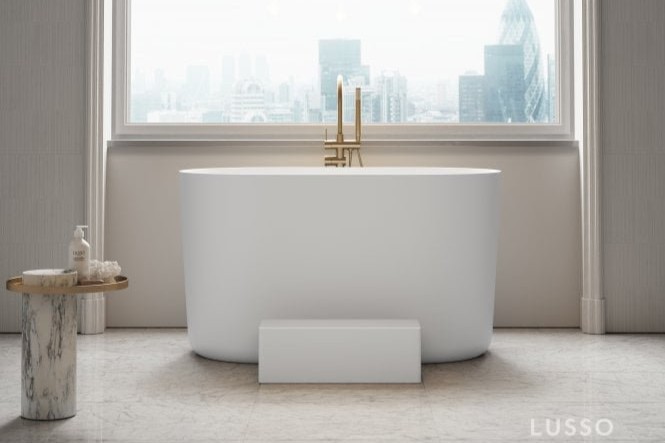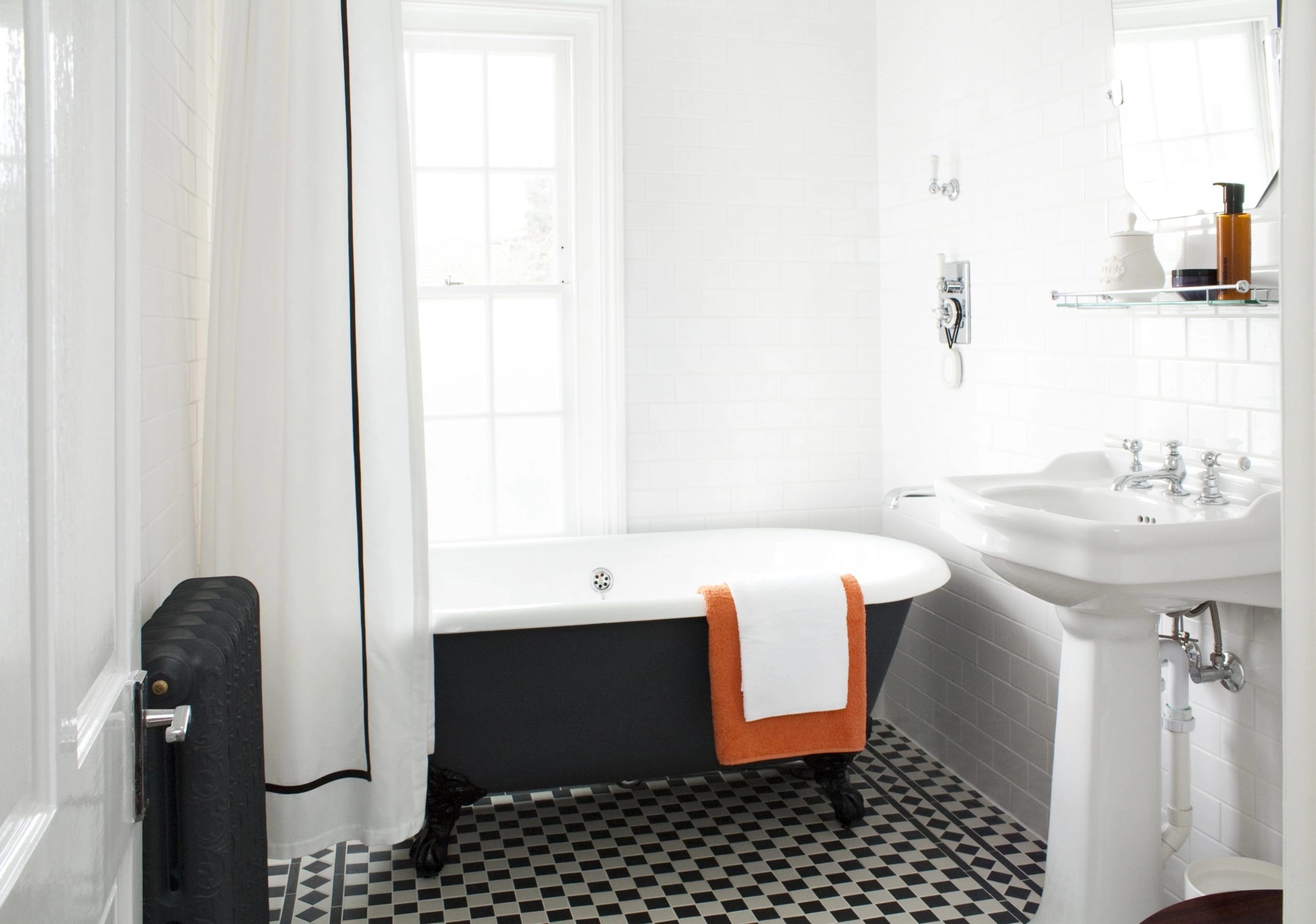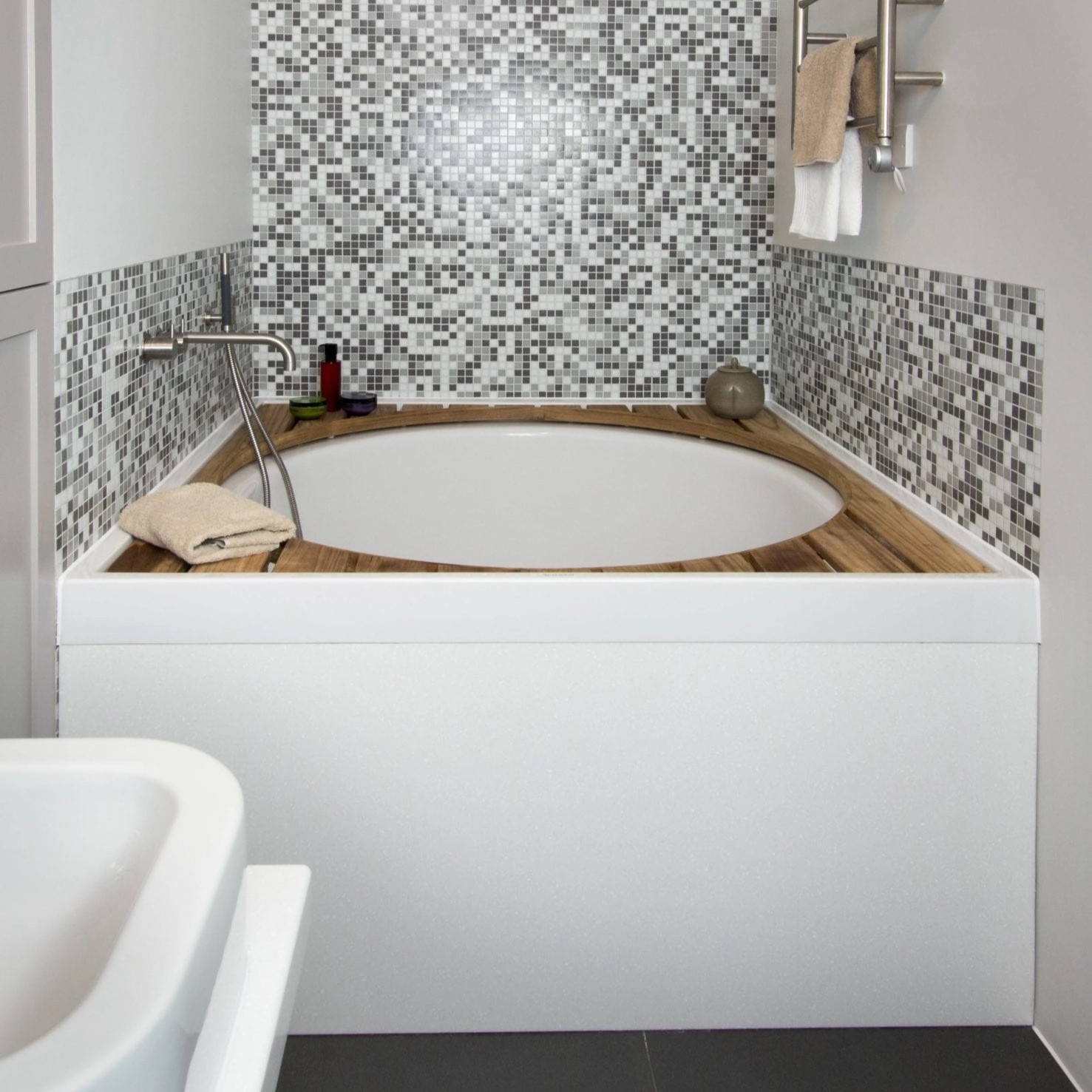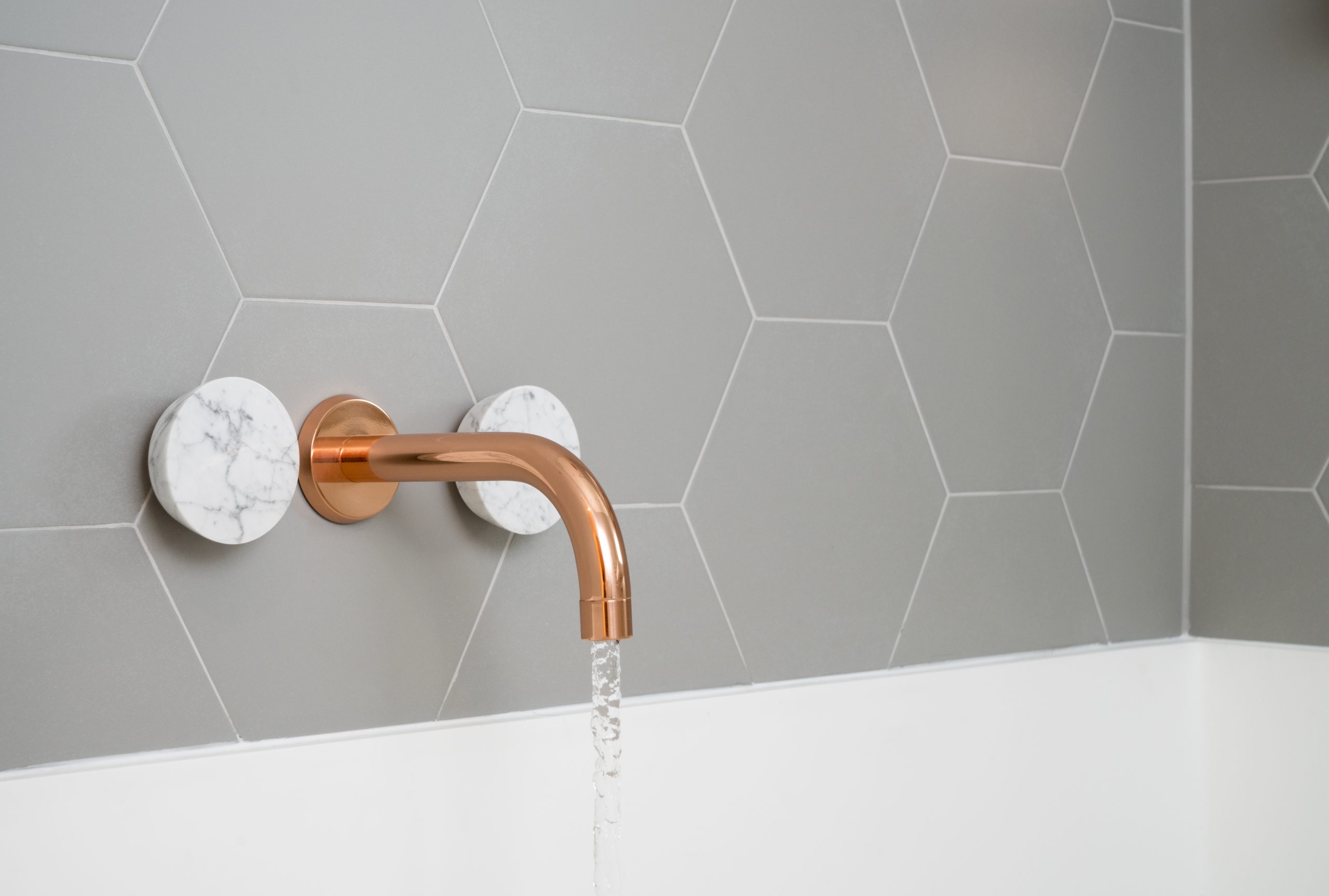One of the most important decisions you’ll make during your bathroom renovation? The type of bath. It’s a defining feature of the space, both visually and functionally. And whether you lean toward the spa-like feel of a freestanding bath or the practical appeal of a built-in tub, your choice will shape the flow and feel of your bathroom for years to come.
In this blog, we compare freestanding vs built-in baths, exploring pros, cons, placement ideas, and our favourite styles. So if you’re planning a luxury bathroom renovation in London, or just looking for interior inspiration, this is a great place to start.
What’s the difference between freestanding and built-in baths?
A freestanding bath is a standalone fixture. It sits directly on the floor and can be positioned almost anywhere, making it a striking design feature and often the centrepiece of the room. A built-in bath, by contrast, is integrated into the architecture – fitted against one or more walls, usually with a tiled or panelled surround. It’s a more traditional approach, but it can still feel incredibly modern when styled well.
Pros and Cons of Freestanding Baths
Freestanding baths are often seen as the ultimate indulgence. They bring instant spa energy to a space. But they’re not always the most practical choice.
Freestanding Bath Pros:
- Design impact: Makes a visual statement and adds a luxury, boutique-hotel feel.
- Placement freedom: Doesn’t need to be positioned against a wall, offering more flexibility.
- Style variety: Available in everything from clawfoot to minimalist sculptural styles.
- Compact options: Now available in sizes suitable for smaller bathrooms too.
Freestanding Bath Cons:
- Heavier: Often requires floor reinforcement, especially with cast iron or stone resin.
- Installation complexity: Plumbing may need to be rerouted, increasing installation time and cost.
- Difficult to clean: Accessing underneath or behind the bath can be tricky. Additional space around it needs to be considered.
- Water usage: Deeper tubs mean more water needed per use.
- Limited shower options: Not ideal for over-bath showers unless placed against a wall.
- No built-in storage: Toiletries need to be stored elsewhere unless wall shelves or bath caddies are used.
- Accessibility: Their height and depth can be challenging for children or anyone with mobility issues.
- Floor level: Needs to be perfectly level to make sure there is no movement.
Popular Styles of Freestanding Baths
Japanese Soaking Tubs

Lusso Stone
Ideal for small bathrooms and spa-like settings.
These compact, deep tubs are designed for sitting upright with water rising all the way to your shoulders. Encouraging stillness, relaxation, and reflection. Perfect for minimalist interiors or modern bathroom renovations that favour simplicity and ritual, a Japanese soaking tub creates a spa-inspired focal point even in the tightest of footprints.
Infinity Bathtubs
 Kohler – Stillness Collection
Kohler – Stillness Collection
A sensory, immersive experience.
If you’re after indulgence, this is it. Infinity tubs feature continuous water flow over the edges into a hidden reservoir, creating a serene, trickling effect that mimics a luxury spa experience. Some high-end models include features like integrated LED lighting or steam-like mist for ultimate relaxation. They’re often seen in modern bathroom design projects where every element is carefully curated to evoke calm and opulence.
Hydrotherapy Bathtubs
 Hydrotherapy Bath – Victorian Plumbing
Hydrotherapy Bath – Victorian Plumbing
Hydrotherapy at home.
With built-in water and air jets, Jacuzzi tubs are designed to ease tired muscles and elevate your soak into a therapeutic ritual. Ideal for a luxury bathroom renovation, these baths offer wellness benefits without compromising on aesthetics. Available in sleek, sculptural designs, they pair beautifully with ambient lighting and spa-style décor.
Clawfoot Tubs
 Amberth Bathroom Project
Amberth Bathroom Project
A timeless classic with enduring charm.
For those drawn to traditional bathroom design, the clawfoot tub is an icon. Whether in crisp white cast iron, glossy black acrylic, or copper for a statement look, this style speaks to heritage and elegance. It anchors the room as a feature piece while still offering deep, comfortable soaking. Pair with traditional brass fittings for a full vintage effect – or contrast with modern tiles for an eclectic, updated take.
Contemporary Minimal Tubs
 Amberth, Bathroom Project
Amberth, Bathroom Project
Effortlessly chic, endlessly versatile.
Sleek, minimal and modern. These bathtubs are designed to blend seamlessly into contemporary interiors. Think smooth curves, matte finishes, and clean lines. Whether oval or rectangular, they offer visual lightness that complements floor-to-ceiling tiling and open-plan layouts. A staple in modern bathroom design, these tubs look especially striking with bold walls or textured feature tiles.
Slipper Baths
 Luxury Bath Company
Luxury Bath Company
Ergonomic elegance, perfect for unwinding.
Recognisable by their raised back (or dual raised ends for two-person baths), slipper tubs offer superior comfort and support for reclining. They’re sculptural yet functional, ideal for anyone who loves long, indulgent soaks. Whether placed under a window or centred in the room, they create a feeling of spa luxury at home, making them a popular choice for boutique-style bathrooms.
Pros and Cons of Built-in Baths
Built-in baths may not grab your attention in the same way, but they make up for it in functionality—and can still be elevated with smart design.
Built-in Bath Pros:
- Efficient use of space: Perfect for compact bathrooms and awkward layouts.
- Easier to install: Plumbing is more straightforward and can be concealed.
- Better for showers: Can easily incorporate a waterproof over-bath shower setup.
- Built-in storage: Surround ledges can hold toiletries, candles, and bath essentials.
- Accessibility: Easier to step into and out of.
Built-in Bath Cons:
- Limited placement options: Needs to be installed against one or more walls.
- Less design impact: Often more subtle unless the surrounding materials elevate the look.
- Fewer shape options: Most models are rectangular, though variations exist.
Popular Styles of Built-in Baths
Shower-Bath Combos
 Amberth, Bathroom Project
Amberth, Bathroom Project
Best of both worlds in one seamless space.
Perfect for compact or awkward-shaped bathrooms, shower baths combine practicality with style. They’re easy to install and offer flexibility. Whether you want a quick rinse or a long soak, you got it. With a high-end finish, quality brassware, and well-chosen tiles, even a standard design can feel bespoke and refined.
Spa Soaking Built-In Baths
Designed for immersion and stillness.
These oversized, deep-set tubs bring the spa home. If you pair them with glass shower enclosures, they create a ‘wet room’ zone that feels intentionally luxurious. They’re a great choice for bathroom renovations where comfort and elegance are prioritised, without compromising on layout or accessibility.
Sunken Tubs
 Architizer
Architizer
A sleek, architectural statement.
Sitting flush with the floor or decked into a raised platform, these baths bring a calm, modern edge to any bathroom. Their low profile adds to the visual spaciousness of a room, making them ideal for minimalist bathrooms or contemporary interiors. Finished with integrated lighting or marble-effect tiling, they deliver a hotel-style experience that feels effortlessly elevated.
Corner Baths

Letta London
Smart solutions for unconventional spaces.
Triangular in shape, corner tubs tuck neatly into tight layouts while still offering ample space to unwind. They make clever use of floor space and are often fitted with whirlpool features for added indulgence. Choose a built-in surround with natural stone or textured tiles to give it a more luxurious, intentional feel.
Which Bath is Best for You?
It comes down to your space, your needs, and your lifestyle. If you love a long soak and want your bath to be the focal point, a freestanding tub might be worth the extra planning. But if you need something space-efficient and shower-friendly, a built-in bath might be the better fit.
Whichever direction you go in, It’s worth careful consideration; the right bath will elevate your bathroom, and your daily routine.
FAQs: Freestanding vs Built-in Baths
Can I have a freestanding bath in a small bathroom?
Yes, there are compact freestanding tubs available, especially Japanese-style soaking tubs. Layout and plumbing will need to be carefully planned.
Do freestanding baths always require floor reinforcement?
Not always, but heavier models like stone or cast iron usually do. Your installer will be able to assess the floor structure.
Which is easier to clean: freestanding or built-in?
Built-in baths are generally easier to clean since only the inside and rim are exposed. Freestanding tubs may require more effort to clean underneath and around.
Can I install a shower over a freestanding bath?
It’s possible, but not ideal. Some double-ended baths are not designed to accommodate an overhead shower. In these cases, you’d need to consider a matters carefully – how to protect the surrounding area from water splashing, for example.Given that the bath is best to be positioned away from the walls, a ceiling-mounted shower head would be the most practical option if an overhead shower is desired. Alternatively, a handheld shower may be a more suitable and elegant solution, offering flexibility while minimising water escape.
Are built-in baths less luxurious?
Not at all – built-in baths can be just as indulgent with the right finishes, surround materials and lighting. Design is key.
Which bath type is better for families?
Built-in baths often offer better practicality for families with young children due to their accessibility and integrated showering.



